
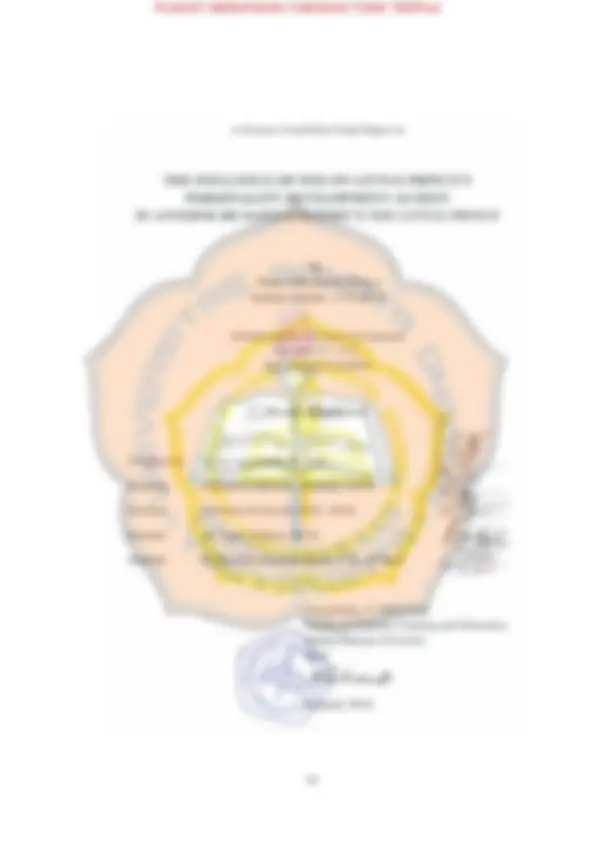
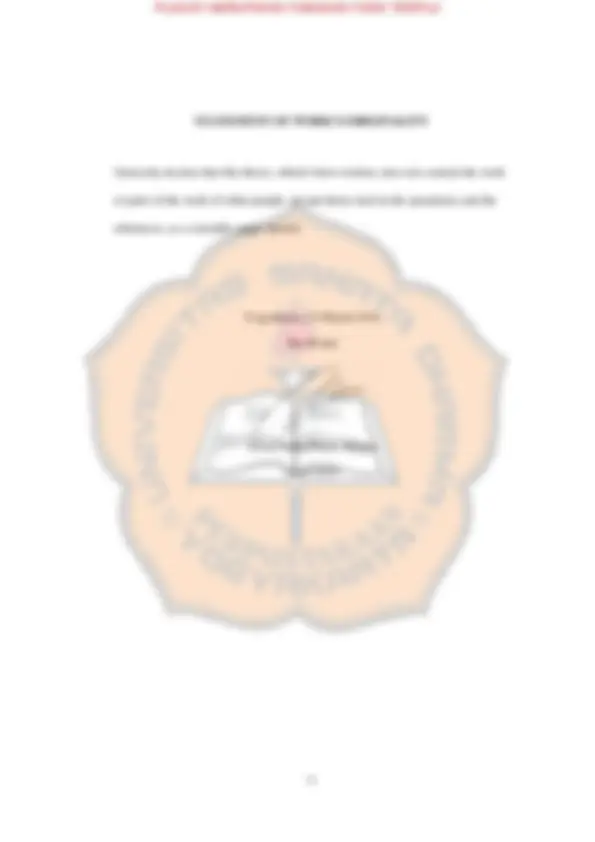
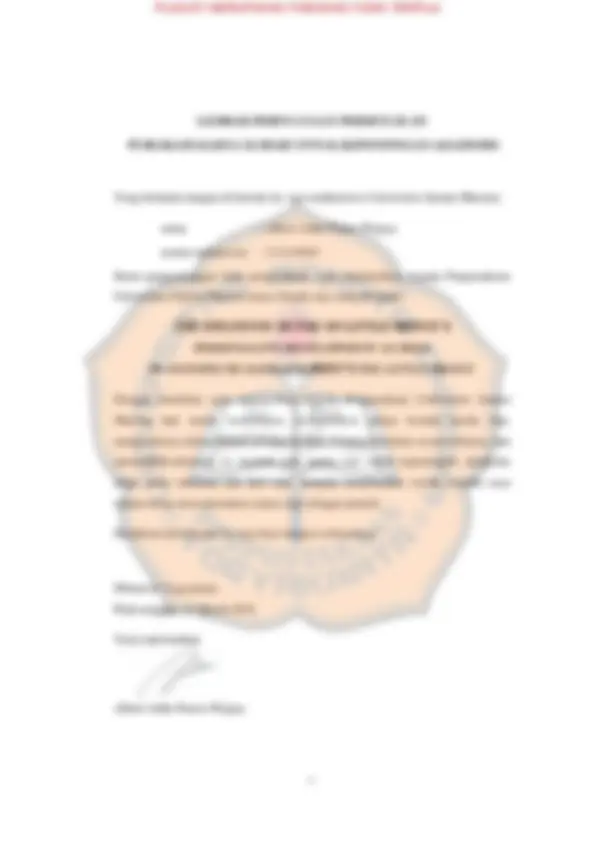
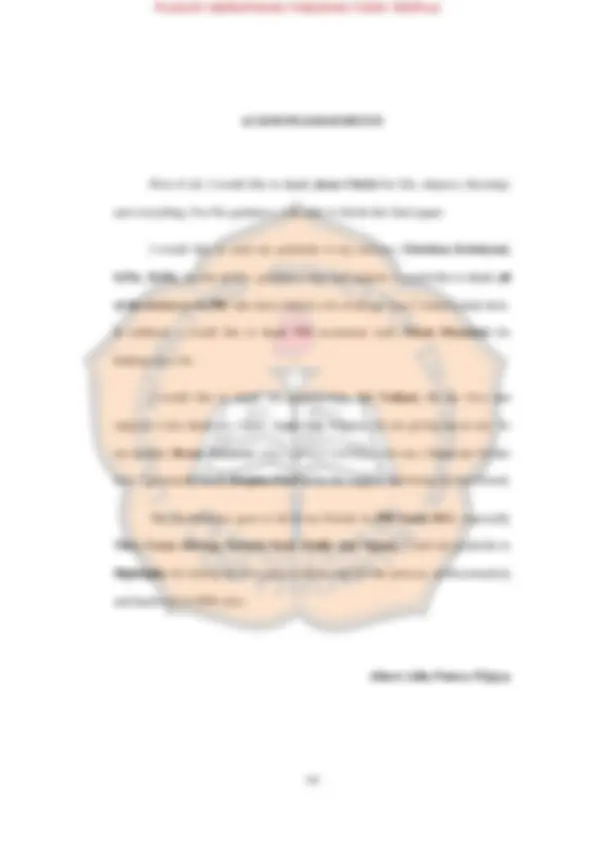
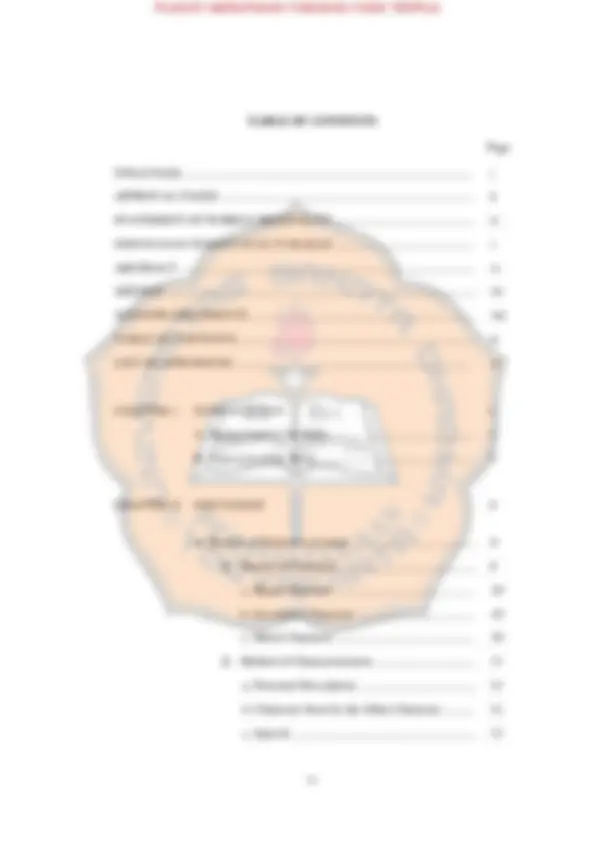
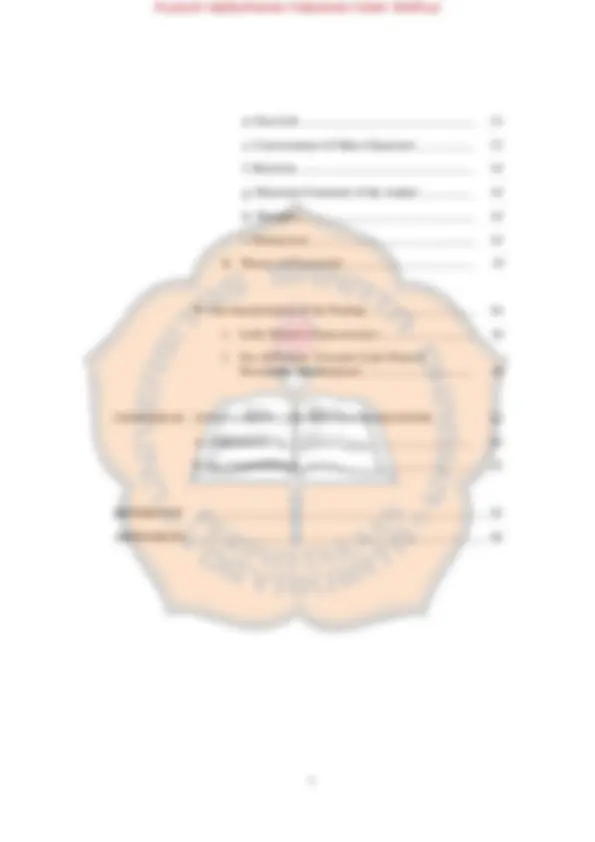
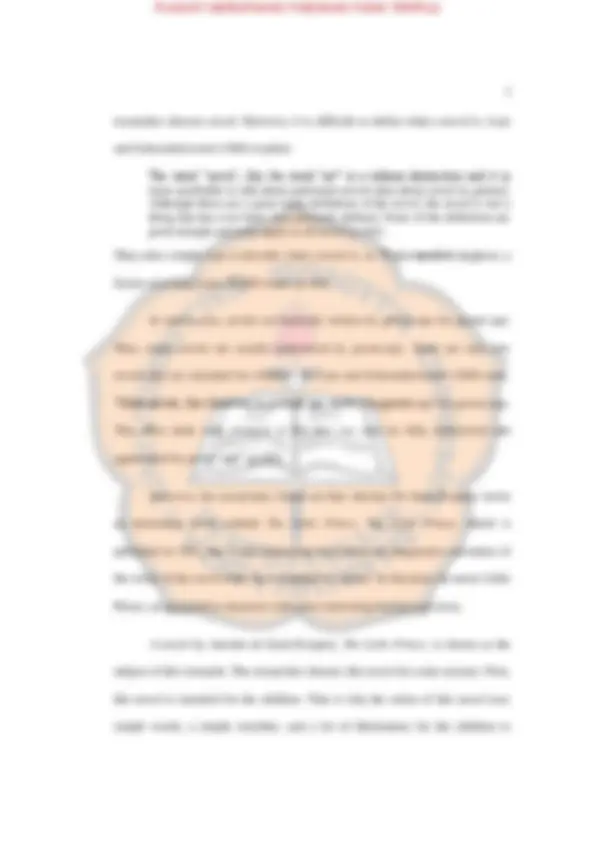
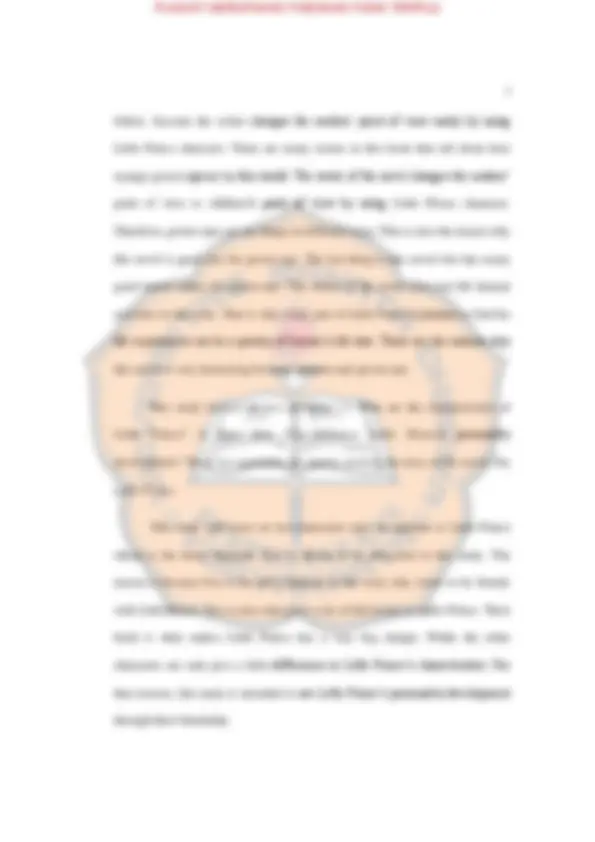
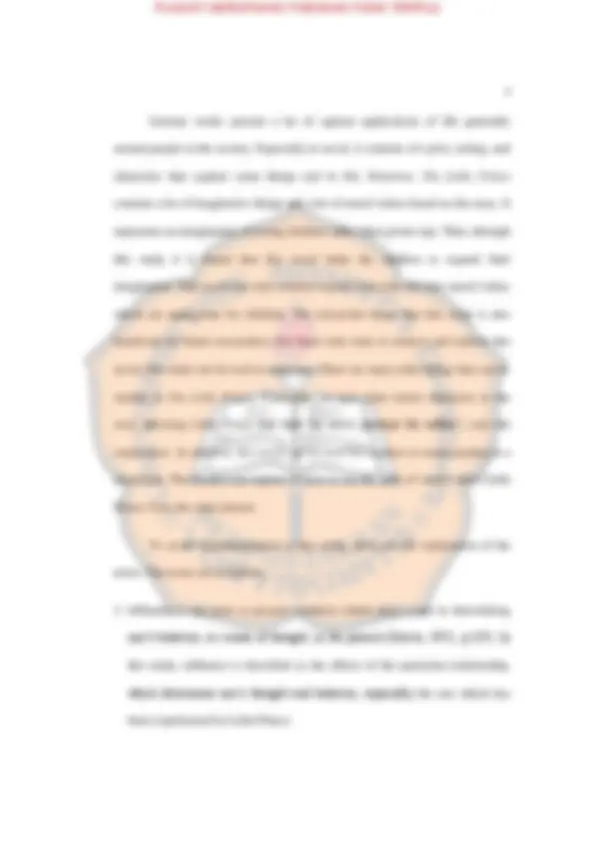
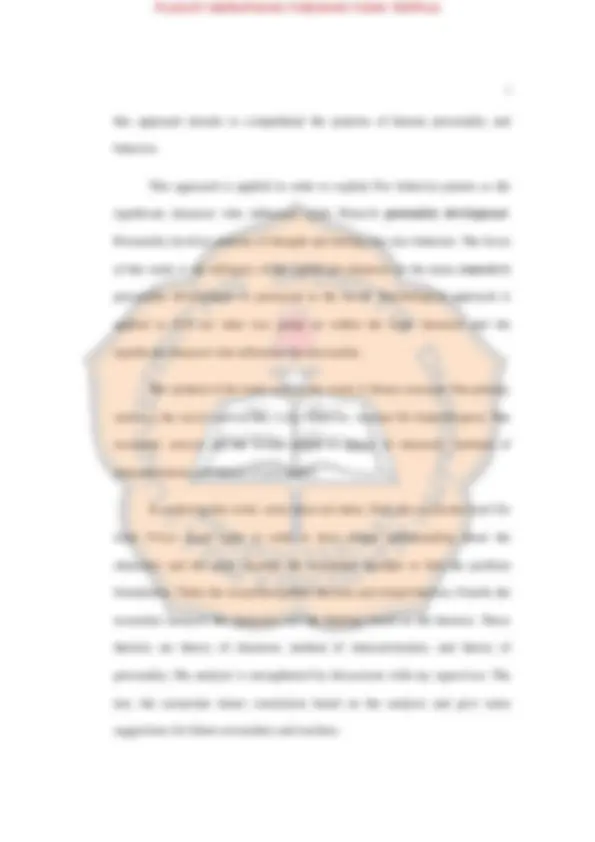
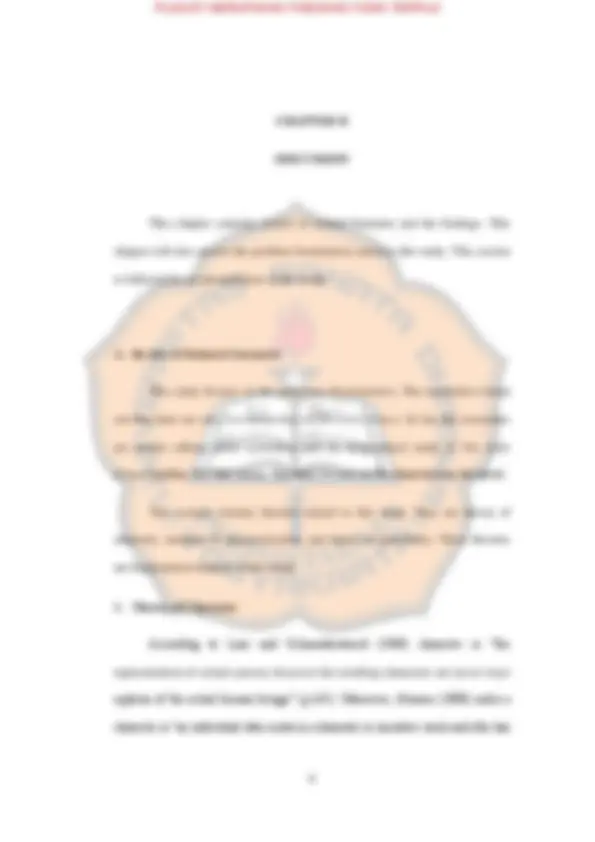
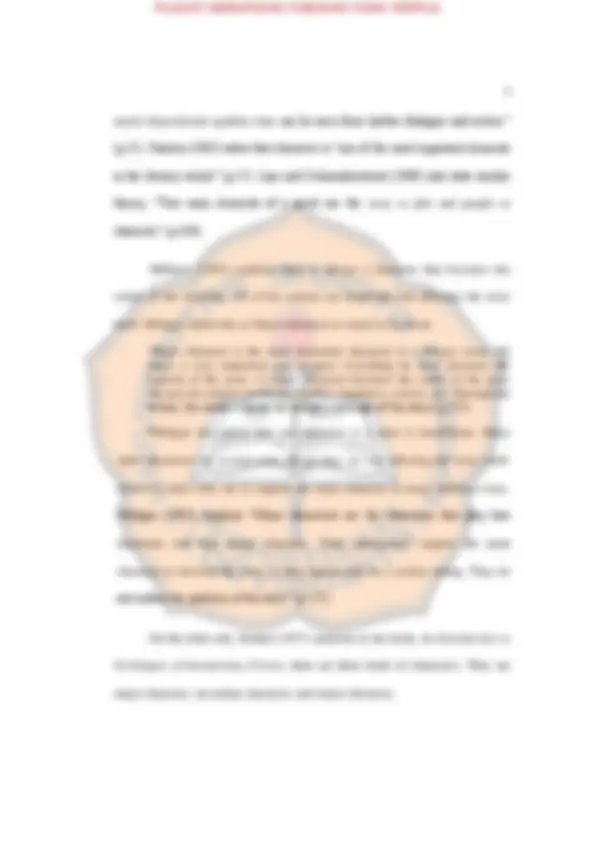
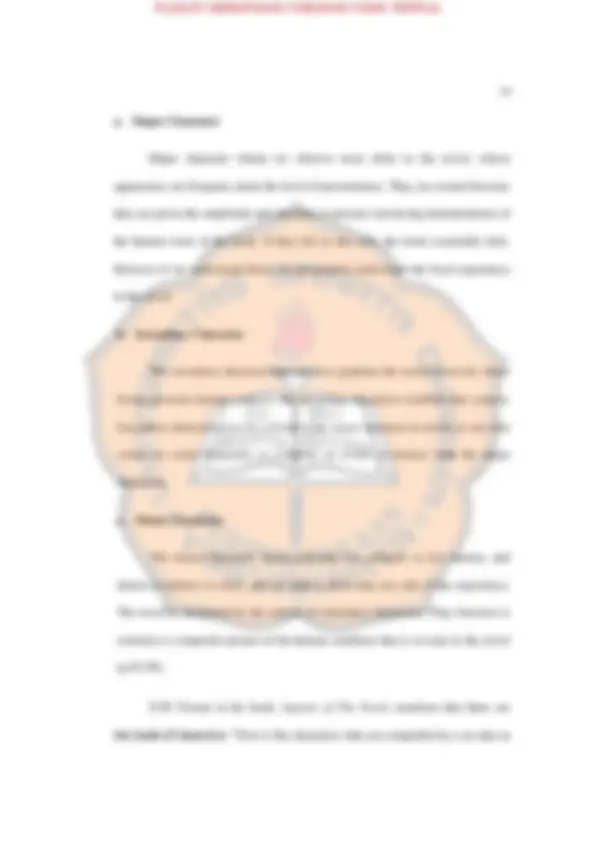
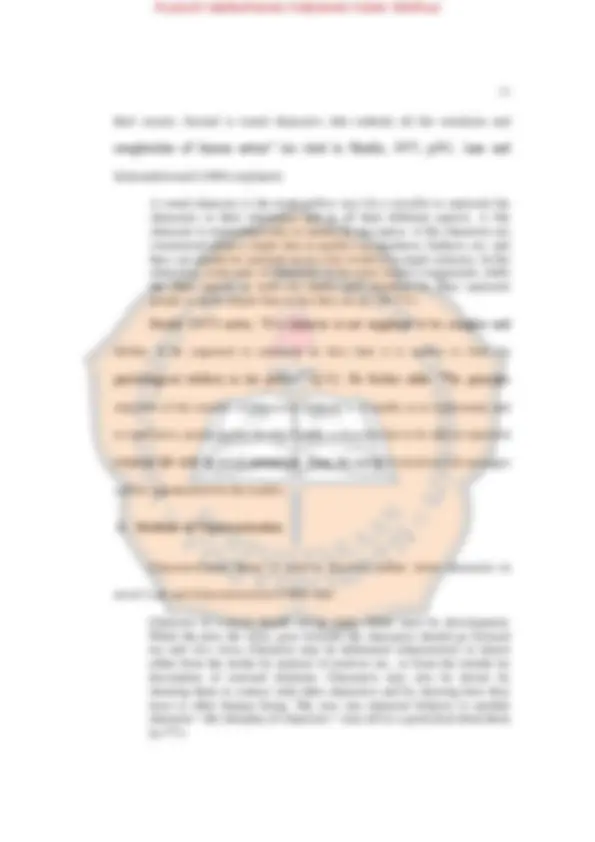
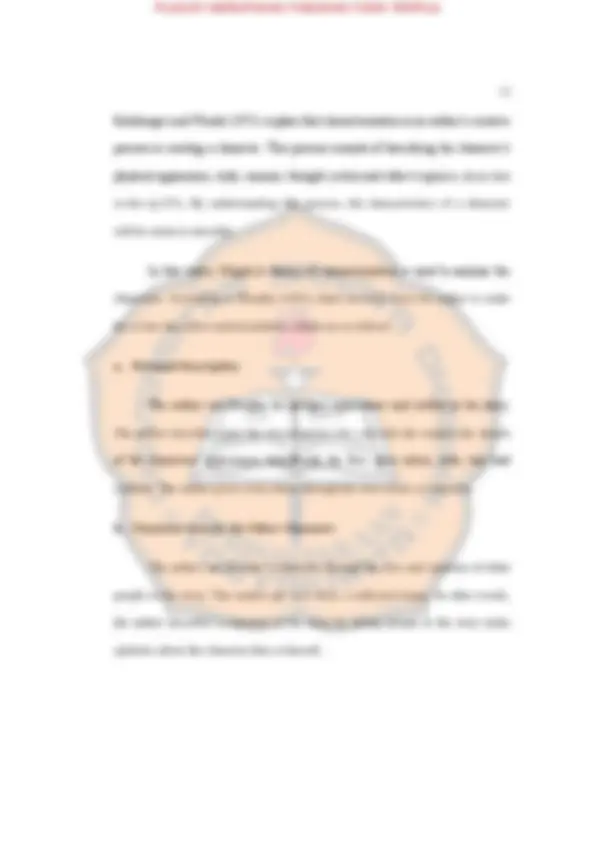
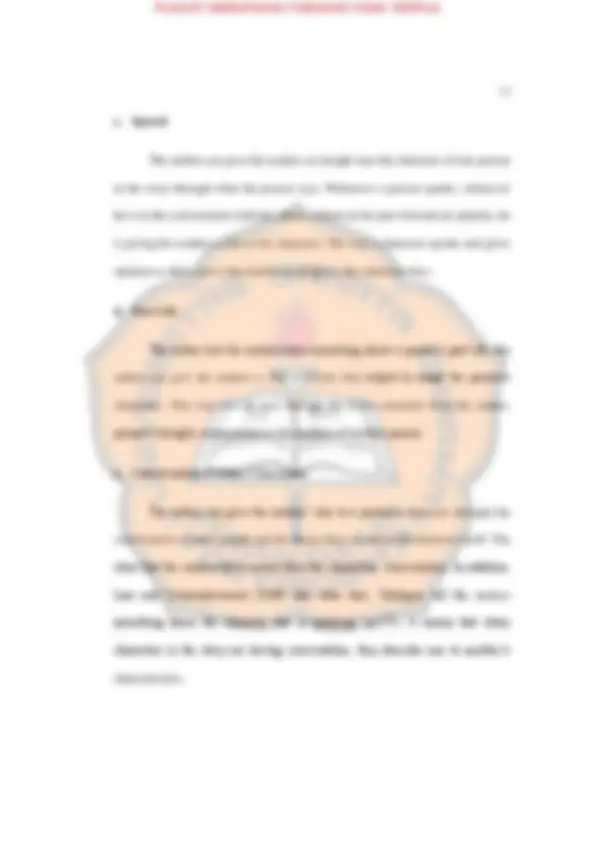
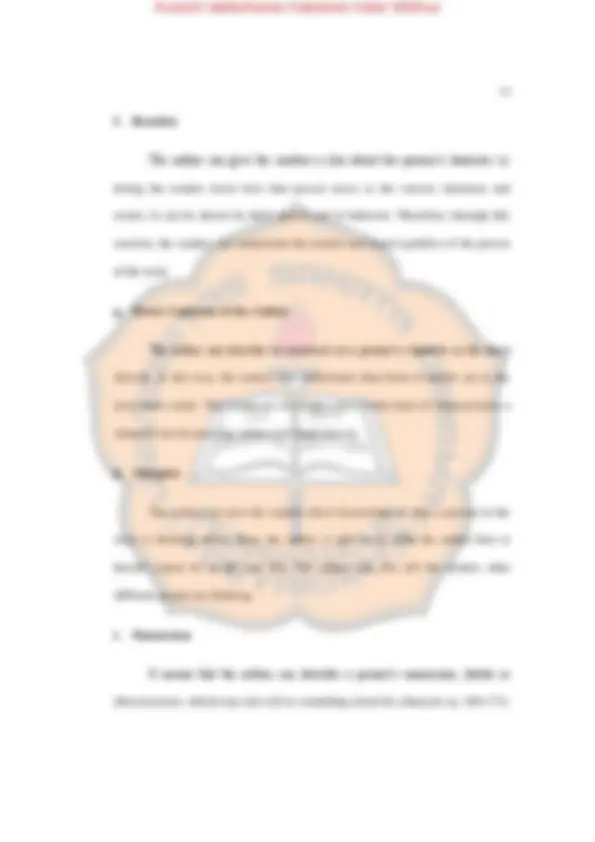
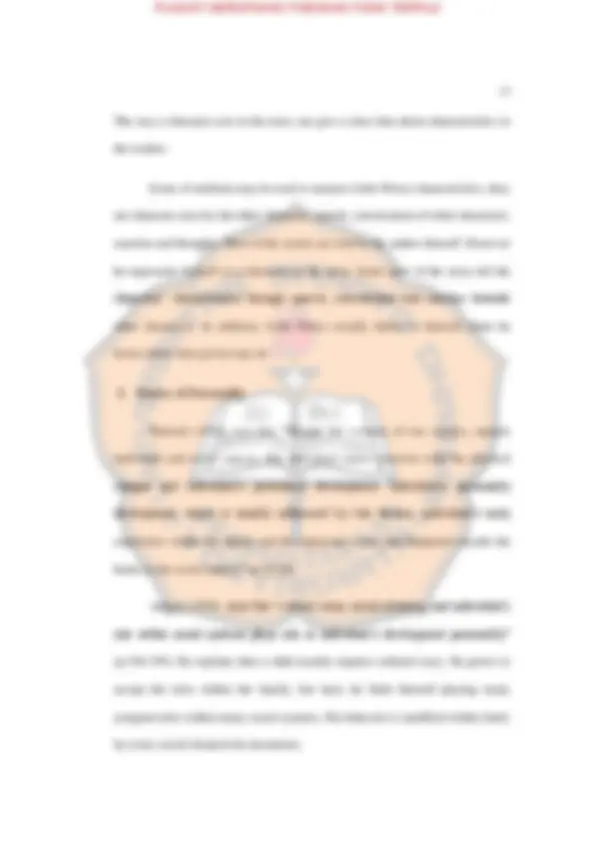
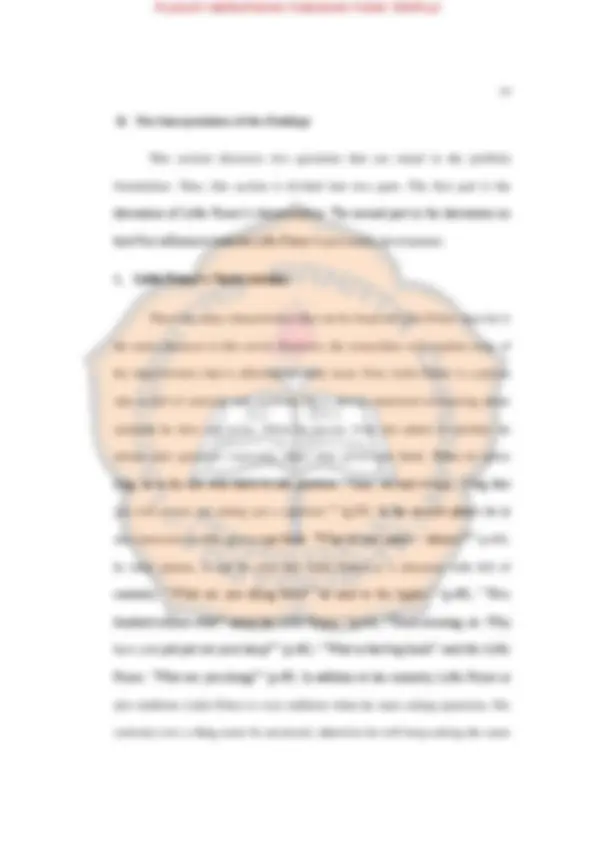
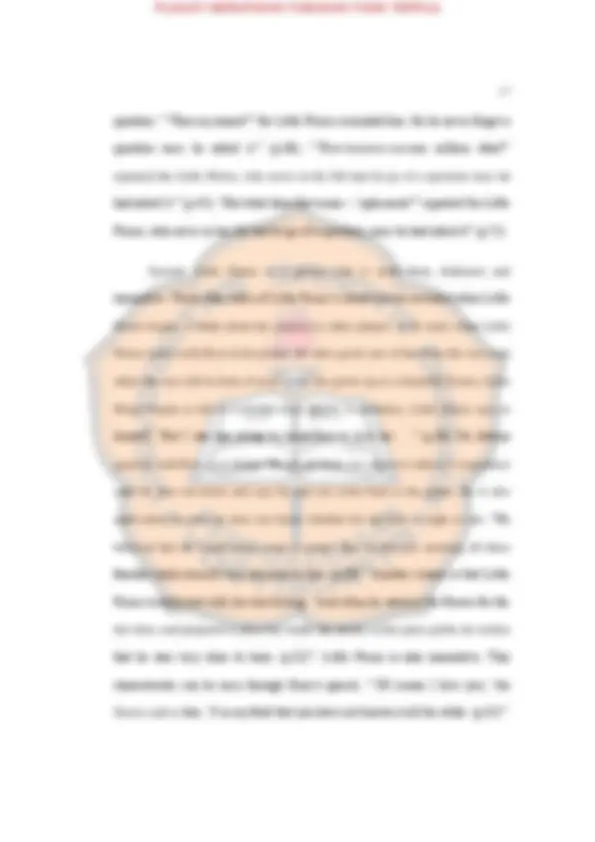
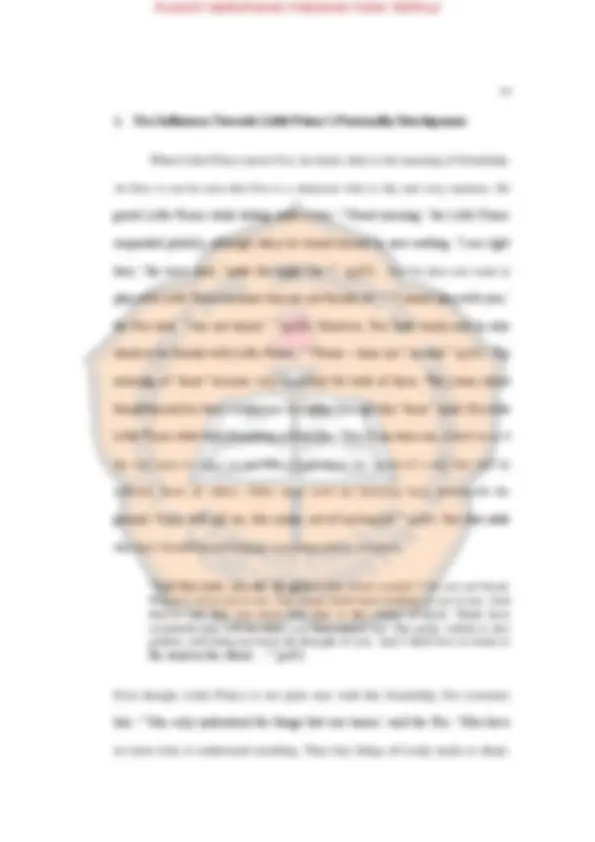
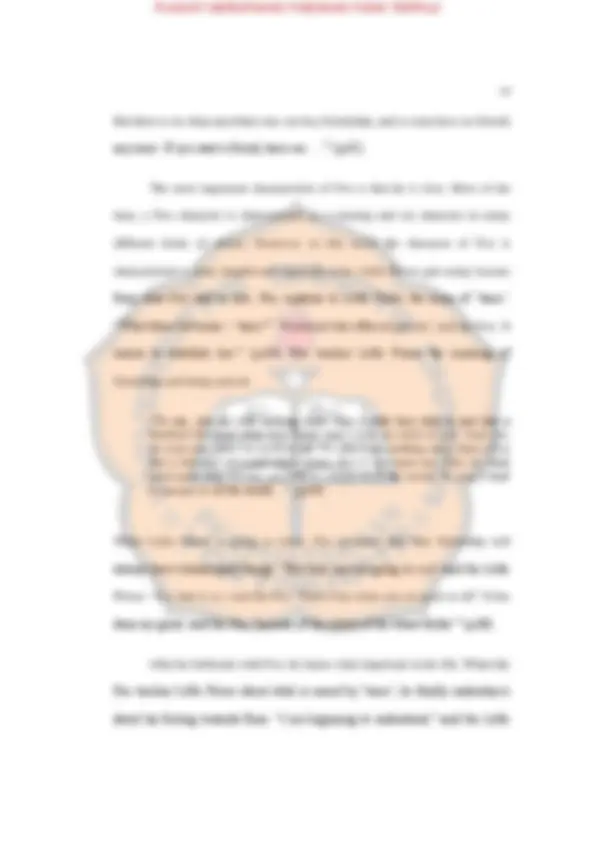
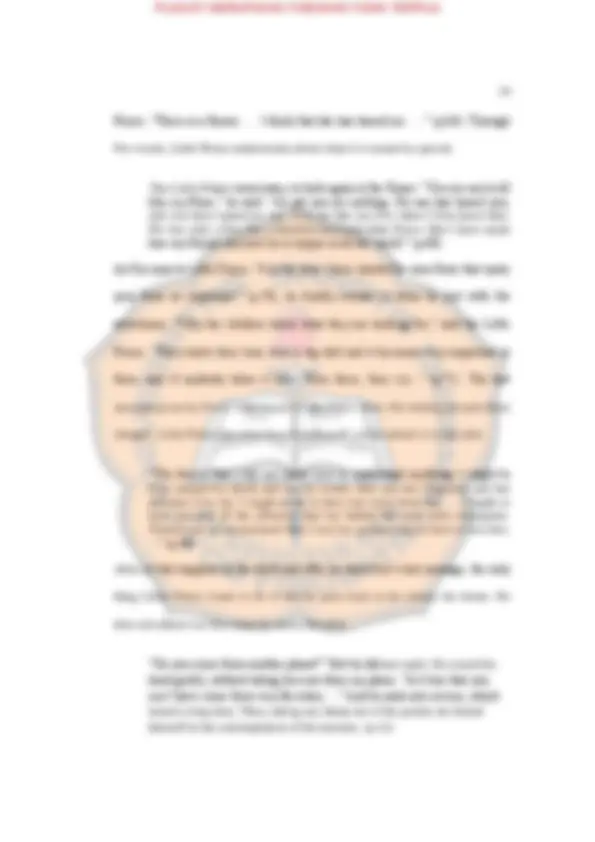
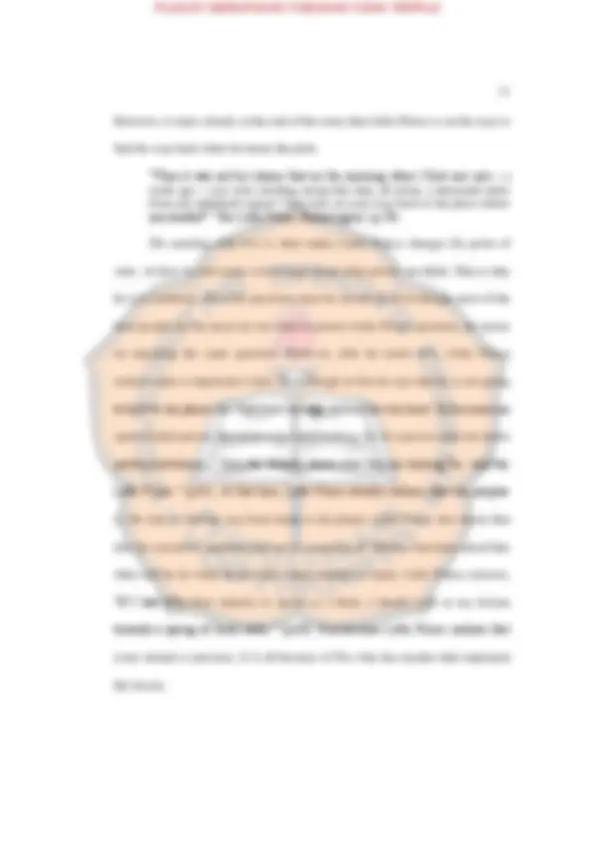
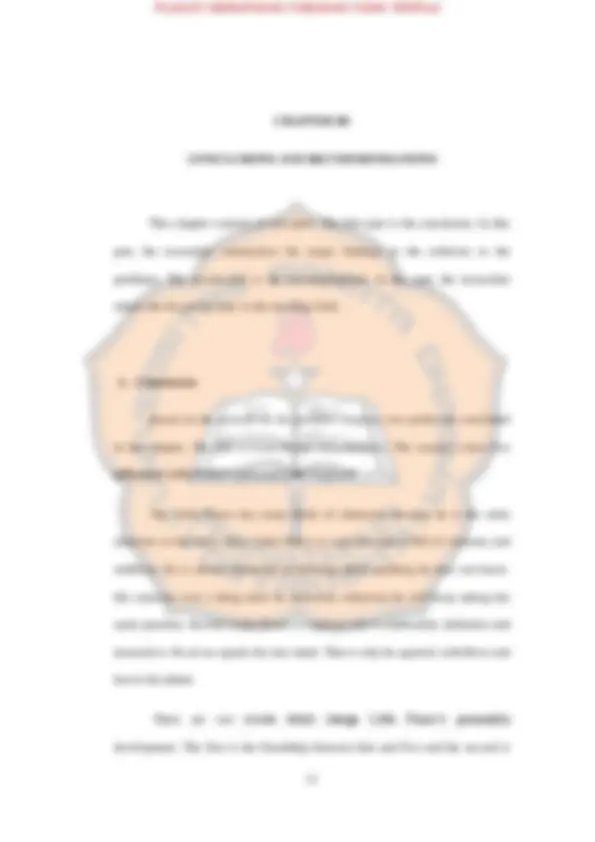
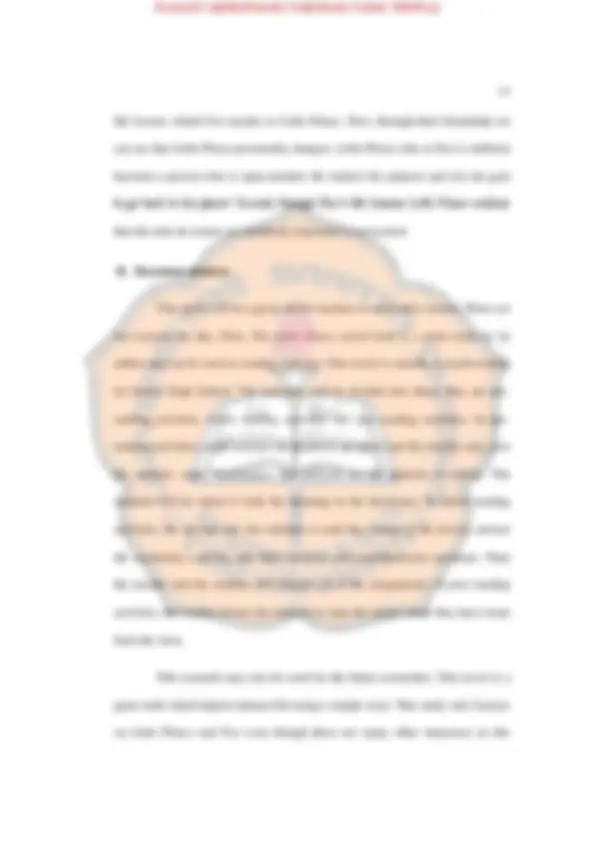
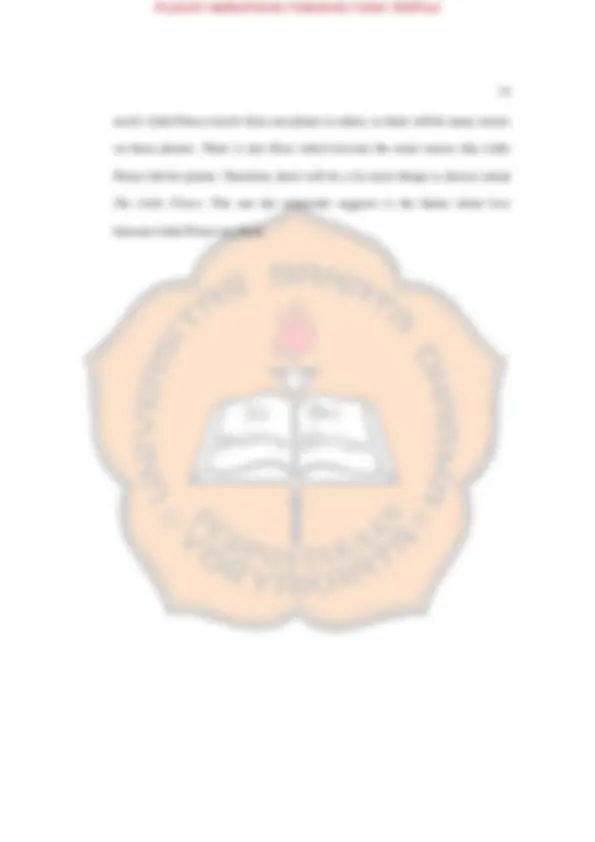
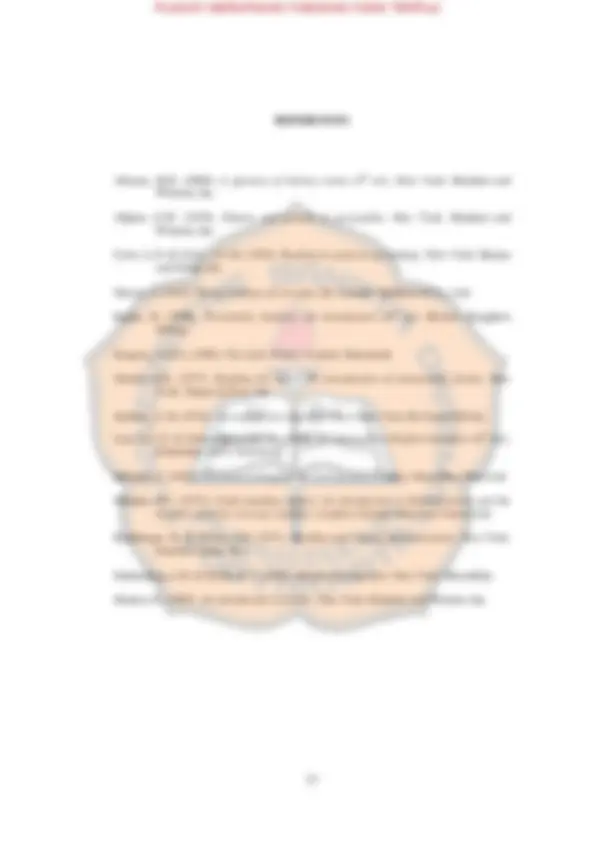
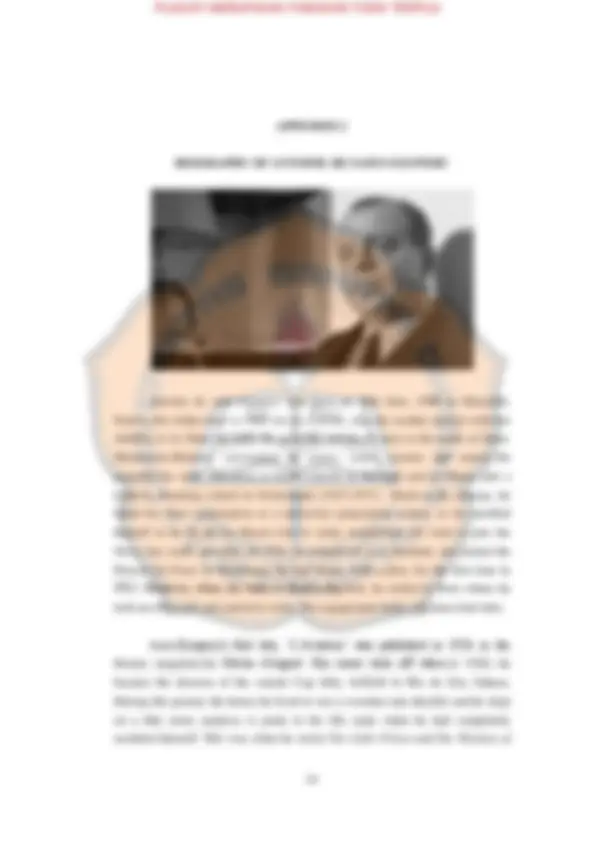
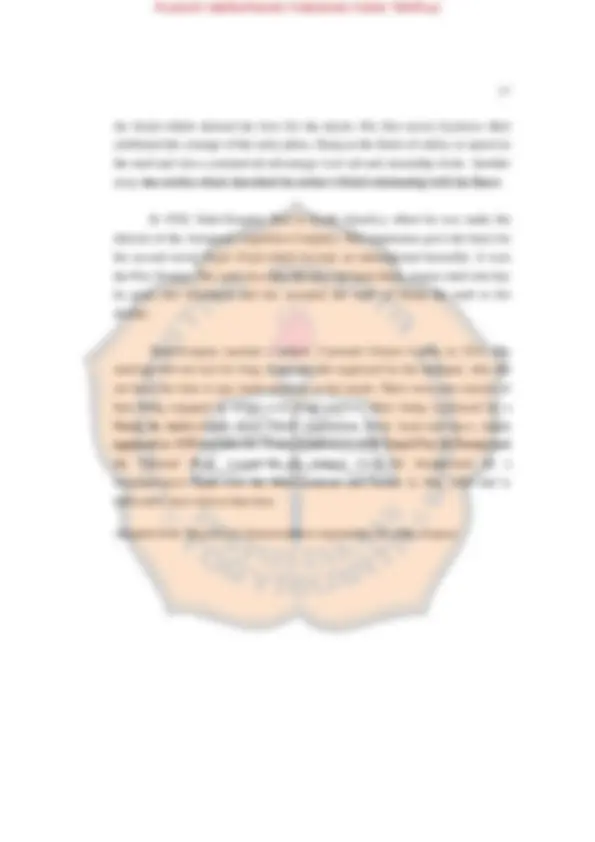
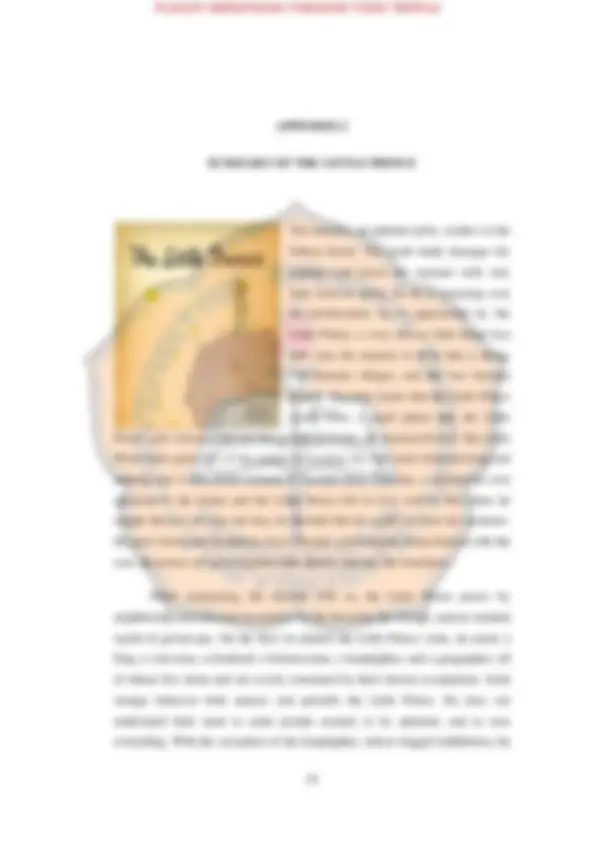
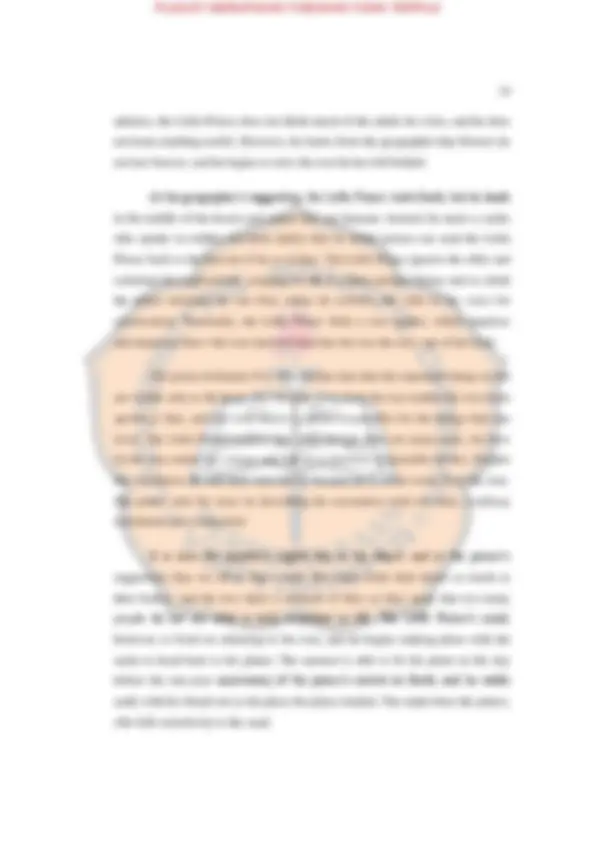
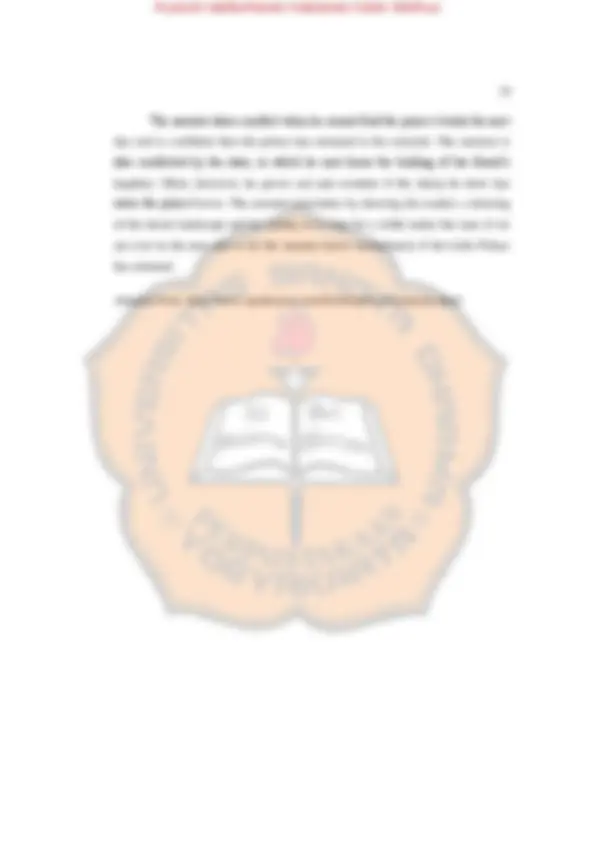


Study with the several resources on Docsity

Earn points by helping other students or get them with a premium plan


Prepare for your exams
Study with the several resources on Docsity

Earn points to download
Earn points by helping other students or get them with a premium plan
Community
Ask the community for help and clear up your study doubts
Discover the best universities in your country according to Docsity users
Free resources
Download our free guides on studying techniques, anxiety management strategies, and thesis advice from Docsity tutors
The influence of the character Fox on the personality development of Little Prince in Antoine de Saint-Exupéry's novel 'The Little Prince'. The study analyzes the significance of their friendship and the life lessons Fox imparts to Little Prince, leading to his transformation and understanding of important values.
Typology: Assignments
1 / 41

This page cannot be seen from the preview
Don't miss anything!


































i
Presented as Partial Fulfillment of the Requirements to Obtain the Sarjana Pendidikan Degree in English Language Education
By Albert Adhe Putera Wijaya Student Number: 111214043 ENGLISH LANGUAGE EDUCATION STUDY PROGRAM DEPARTMENT OF LANGUAGE AND ARTS EDUCATIONFACULTY OF TEACHERS TRAINING AND EDUCATION SANATA DHARMA UNIVERSITY YOGYAKARTA 2016
ii
iv
I honestly declare that this thesis, which I have written, does not contain the work or parts of the work of other people, except those cited in the quotations and the references, as a scientific paper should.
Yogyakarta, 15 March 2016 The Writer
Albert Adhe Putera Wijaya 111214043
v
Yang bertanda tangan di bawah ini, saya mahasiswa Universitas Sanata Dharma:
nama : Albert Adhe Putera Wijaya nomor mahasiswa : 111214043 Demi pengembangan ilmu pengetahuan, saya memberikan kepada Perpustakaan Universitas Sanata Dharma karya ilmiah saya yang berjudul:
THE INFLUENCE OF FOX ON LITTLE PRINCE’S PERSONALITY DEVELOPMENT AS SEEN IN ANTOINE DE SAINT-EXUPERY’S THE LITTLE PRINCE
Dengan demikian saya memberikan kepada Perpustakaan Universitas Sanata Dharma hak untuk menyimpan, mengalihkan dalam bentuk media lain, mengelolanya dalam bentuk pangkalan data, mendistribusikan secara terbatas, dan mempublikasikannya di internet atau media lain untuk kepentingan akademis tanpa perlu meminta ijin dari saya maupun memberikan royalti kepada saya selama tetap mencantumkan nama saya sebagai penulis.
Demikian pernyataan ini saya buat dengan sebenarnya.
Dibuat di Yogyakarta Pada tanggal: 15 March 2016
Yang menyatakan
Albert Adhe Putera Wijaya
vii
Wijaya, Albert Adhe Putera. (2016). The Influence of Fox on Little Prince's Personality Development as Seen In Antoine De Saint-Exupery's Little Prince. ProgramYogyakarta. Studi Pendidikan Bahasa Inggris, Universitas Sanata Dharma:
Penelitian ini menganalisa sebuah novel oleh Antoine De Saint-Exupery berjudul The Little Prince. Novel ini bercerita tentang petualangan Little Prince dalam menemukan pelajaran hidup. Untuk beberapa alasan dia meninggalkan planetnya dan pergi dari satu planet ke planet yang lain. Di planet Bumi, iabertemu Fox dan akhirnya mereka menjadi teman baik. Pertemuan mereka menjadi sangat penting bagi Little Prince karena Fox adalah satu-satunya yang menjadi teman Little Prince. Fox mengajarkan banyak pelajaran hidup kepada Little Prince. Melalui pelajaran yang diberikan Fox , Little Prince menyadari apa yang penting baginya dan mengubah sudut pandangnya. Tujuan dari penelitian ini adalah untuk menganalisa pengaruh Fox pada pengembangan kepribadian Little Prince. Ada dua pertanyaan dalam penelitian ini: (1) Apakah karakteristik yang dimiliki oleh Little Prince? (2) Bagaimana Fox mempengaruhi perkembangan kepribadian Little Prince?
adalah novel itu sendiri yang berjudul^ Ada dua sumber yang digunakan dalam penelitian ini. Sumber utama The Little Prince. Sumber sekunder adalah buku yang terkait dengan teori novel, teori karakter, metode karakterisasi, dan teori kepribadian. Berdasarkan hasil analisis, penulis menemukan bahwa adalah orang yang Little Prince jujur dan tidak penuh rasa ingin tahu dan keras kepala. Dia juga ambivalen, tidak sensitif. Ada dua peristiwa yang mengubah pengembangan kepribadian Little Prince. Yang pertama adalah persahabatan antara dia dan Fox dan yang kedua adalah pelajaran hidup yang Fox ajarkan kepada Little Prince. Itulah yang membuat Little Prince ingin kembali ke planetnya lagi.
di masa depan. Untuk guru bahasa Inggris, penelitian ini dapat digunakan sebagai^ Studi ini memberikan beberapa saran bagi guru bahasa Inggris dan peneliti bahan bacaan bagi para siswa. Dan bagi para peneliti masa depan yang menggunakan novel yang sama, mereka dapat menggunakan tema tentang cinta antara Little Prince dan Rose. Kata kunci : Influence , Personality Development , The Little Prince
viii
First of all, I would like to thank Jesus Christ for life, chances, blessings and everything. For His guidance, I am able to finish this final paper.
I would like to send my gratitude to my advisor, Christina Kristiyani, S.Pd., M.Pd. , for the advice, guidance, time and support. I would like to thank all of the lecturers in PBI who have shared a lot of things since I started study here. In addition, I would like to thank PBI secretariat staff, Mbak Dhanniek for helping me a lot.
I would like to thank my grandmother, Sri Yuliani, for the love and support. I also thank my father, Agus Ana Wijaya , for not giving up on me. To my mother, Henny Setiarini , who is always watching over me, I thank her for her love. I personally thank Brigitta Pratiwi for the support and being my best friend.
The thankfulness goes to all of my friends in PBI batch 2011 , especially Theo, Yanu, Ginong, Gerard, Doni, Malik, and Agung. I send my gratitude to Highlights for letting me be a part of theirs and for the process, professionalism and hardwork in SPD class.
Albert Adhe Putera Wijaya
- d. Past Life - e. Conversation of Other Characters - f. Reaction - g. Direction Comment of the Author - h. Thoughts - i. Mannerism - 3. Theory of Personality xi
Appendix 1. Biography of Antoine De Saint-Exupery.............................. 26 Appendix 2. Summary of the Little Prince............................................... 28
2
researcher chooses novel. However, it is difficult to define what a novel is. Laar and Schoonderwoerd (1969) explain: The word “novel’, like the word “art” is a tedious abstraction and it is more profitable to talk about particular novels than about novel in general.Although there are a great many definition of the novel, the novel is not a thing that has ever been very precisely defined. None of the definition are good enough and none apply to all novel (p.162). They add a simple way to describe what a novel is, as “It is a narrative in prose; a fiction of at least some 50,000 words (p.163).
In many cases, novels are basically written by grown-ups for grown-ups. Thus, many novels are usually understood by grown-ups. There are only few novels that are intended for children. As Laar and Schoonderwoerd (1969) note, “Most novels, like literature in general, are written by grown-ups for grown-ups. This often deals with situation in life that can only be fully understood and appreciated by grown-ups” (p.162).
However, the researchers found out that Antoine De Saint-Exupery wrote an interesting novel entitled The Little Prince. The Little Prince, which is published in 1943, has a very interesting story about an imaginative adventure of the writer of the novel when he is stranded in a desert. In that place he meets Little Prince, an imaginative character with quite interesting background story.
A novel by Antoine de Saint-Exupery, The Little Prince, is chosen as the subject of this research. The researcher chooses this novel for some reasons. First, this novel is intended for the children. That is why the writer of this novel uses simple words, a simple storyline, and a lot of illustrations for the children to
3
follow. Second, the writer changes the readers’ point of view easily by using Little Prince character. There are many stories in this book that tell about how strange grown-ups act in this world. The writer of the novel changes the readers’ point of view to children’s point of view by using Little Prince character. Therefore, grown-ups can see things in different ways. This is also the reason why this novel is good also for grown-ups. The last thing is this novel also has many good moral values for grown-ups. The writer of the novel uses real life human activities in the story. That is why every part of Little Prince’s journey to find his life experiences can be a portray of human’s life also. Those are the reasons why this novel is very interesting for both children and grown-ups.
This study focuses on two problems. 1) What are the characteristics of Little Prince? 2) How does Fox influence Little Prince’s personality development? These two questions are used to analyze the story of the novel The Little Prince.
This study will focus on two characters only. In addition to Little Prince which is the main character, Fox is chosen to be discussed in this study. The reason is because Fox is the only character in the story who wants to be friends with Little Prince. Fox is also who gives a lot of life lesson to Little Prince. Their bond is what makes Little Prince has a very big change. While the other characters are only give a little differences in Little Prince’s characteristics. For that reasons, this study is intended to see Little Prince’s personality development through their friendship.
5
B. Approach of the Study
One of the best novels by Antoine De Saint-Exupery, entitled The Little Prince , is used as an object to be discussed. A brief explanation on the life of Antoine De Saint-Exupery can be found in Appendix 1. The Little Prince tells about the adventure of Little Prince in finding life lessons. Little Prince who owns his tiny little planet lives happily even though there is not any one to talk to. One day, a Rose comes to his planet. He thinks that his Rose is special, the only one in the universe. They talk about many things in the world they live in. As they talk to each other, there is a doubt in the heart of Little Prince. There are things that Little Prince could not understand as they argue to each other. He is too naïve and he wants to learn about what grown-ups think. He decides to travel from one planet to others to experience what he could not understand. He meets many kinds of people in different planets until he arrived on Earth. The Earth is different from
6
the planets he visits before; it is very vast. On this planet, Little Prince is stranded in a desert and meets many unexpected events. One of them is that he meets Fox. They becomes a good friend and Fox teaches many things to Little Prince. Their friendship changes Little Prince’s life entirely. The summary of the novel can be found in Appendix 2.
In this study, the Psychological approach is applied to analyze this novel. According to Rohrberger and Woods (1971), “A critical approach to literature necessitates an understanding of its nature, function and positive values” (p.3). A general point of view is needed to analyze, criticize and understand a literary work. Thus, Rohrberger and Woods discuss five critical approaches used in analyzing a literary work; they are Formalist approach, Biographical approach, Sociocultural-Historical approach, Mythopoeic approach and Psychological approach. From all of those approaches, the Psychological approach is the most appropriate approach to analyze this novel. Rohrberger and Woods explain that, “The Psychological approach involves the effort to locate and demonstrate certain recurrent patterns. This approach determines the pattern through human social communication” (p.13). In other words, Psychological approach focuses on the psychological side of human beings. According to Lester Crow and Alice Crow (1954), “Psychology is often said as the study of human behavior and the progress of man’s self-development. Human behavior and development are influenced by the environment and the potential that man have” (p.228-231). The characters’ thought and behavior can be understood by using psychological approach since
8
This chapter contains review of related literature and the findings. This chapter will also answer the problem formulation stated in this study. This section is followed by an interpretation of the result.
A. Review of Related Literature
This study focuses on the analyzing characteristics. The researchers found out that there are only few researches on The Little Prince. So far, the researches are mainly talking about symbolism and the biographical study of The Little Prince ’s author. For that reason, this study focuses on the characters on the novel.
This section contains theories related to this study. They are theory of character, methods of characterization, and theory of personality. These theories are fundamental analysis of this study.
1. Theory of Character
According to Laar and Schoonderwoerd (1969) character is “the representation of certain person, however the resulting characters are never exact replicas of the actual human beings” (p.165). Moreover, Abrams (2000) notes a character is “an individual who exists in a dramatic or narrative work and s/he has
9
moral dispositional qualities that can be seen from his/her dialogue and action.” (p.21). Stanton (1965) states that character is “one of the most important elements in the literary works” (p.17). Laar and Schoonderwoerd (1969) also state similar theory, “Two main elements of a novel are the story or plot and people or character” (p.163).
Milligan (1983) explains there is always a character that becomes the center of the storyline. All of his actions are important and affecting the story itself. Milligan called this as Major character as stated in his book: Major character is the most important character in a literary work. He plays a very important role because everything he does becomes the content of the story. A major character becomes the centre of the story because he endures problems, conflict, happiness, sorrow, etc. Through his action, the readers knows the author’s message of the story (p.155). Milligan also added that one character in a story is insufficient. Many other characters are needed even though they are less affecting the story itself. However, their roles are to support the main character in many different ways. Milligan (1983) explains “Minor characters are the characters that play less important role than major character. Their appearances support the main character to develop the story so they appear only in a certain setting. They do not endure the problem of the story” (p.155). On the other side, Henkel (1977) mentions in his book, An Introduction to Techniques of Interpreting Fiction , there are three kinds of characters. They are major character, secondary character, and minor character.